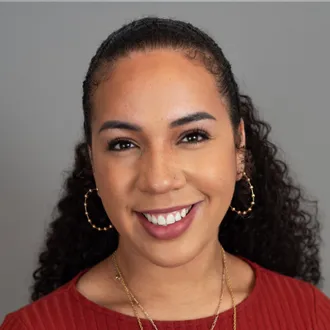Caring for Patients Experiencing Homelessness: 3 Practical Strategies for Palliative Teams

Sheila and Carl were high school sweethearts who built their life together in the small town where they grew up. Shortly after turning sixty-five, Carl unexpectedly died after a heart attack while Sheila was in the middle of chemotherapy treatment for her recent breast cancer diagnosis. Unable to re-enter the workforce due to her treatment schedule—and without Carl’s income as a truck driver—Sheila fell behind on rent and got evicted from their apartment of forty-five years while hospitalized for her mastectomy. She held onto Carl’s truck.
Initially, a neighbor invited Sheila to move in with them while she recovered from surgery. Newly homeless, unfamiliar with the shelter system, and overwhelmed with her chemotherapy and radiation plan, Sheila turned down the invitation. Instead, she moved into Carl’s truck, where she felt safest and most comfortable. Worried that someone would steal her belongings or the truck would be towed, Sheila stopped attending her medical appointments. Without consistent access to electricity, she struggled to keep her cell phone charged. Her treatment team could not reliably reach her, and she was deemed “lost to follow-up”.
The Link Between Homelessness and Health
Sheila’s story is not uncommon. Every night, hundreds of thousands of people in the United States go without a home. In January 2024, the U.S. Department of Housing and Urban Development counted approximately 771,480 individuals experiencing homelessness on a single night—the highest number ever recorded in a point-in-time count. While homelessness is rising nationwide, older adults like Sheila are particularly vulnerable, now comprising about one quarter of the homeless population nationally.
At the same time, homelessness remains deeply inequitable. Black, Latinx, American Indian, Alaska Native, and Native Hawaiian populations face disproportionately high rates of homelessness, reflecting the enduring impacts of inequitable housing, employment, and health care policies.
"As Sheila’s experience demonstrates, the relationship between homelessness and health is bidirectional and mutually reinforcing."
As Sheila’s experience demonstrates, the relationship between homelessness and health is bidirectional and mutually reinforcing. Catastrophic medical events and medical debt increase the risk of homelessness. Once homeless, people experience worse health, including increased serious illnesses, chronic conditions, infectious diseases, and mental health and substance use disorders. They endure some of the worst inequities of any population with all-cause mortality ranging from 3.5 to 4.2 times higher than that of the general population.
"Once homeless, people experience worse health, including increased serious illnesses, chronic conditions, infectious diseases, and mental health and substance use disorders."
How Palliative Care Can Break Barriers
Sheila’s case also shows that many of the barriers to care presented by homelessness—mobility, access, and financial, among others—can be reduced with palliative care.
Eighteen months after her last appointment, Sheila was admitted to the hospital with pneumonia and was found to have new pulmonary and bone metastasis. The inpatient palliative care team met with her for symptom management and to help establish her goals regarding cancer treatment.
"Sheila’s case also shows that many of the barriers to care presented by homelessness—mobility, access, and financial, among others—can be reduced with palliative care."
Though Sheila was initially hesitant to talk about her housing situation, this changed after the team built trust with her. Once comfortable, Sheila shared how her housing instability impacted her engagement in treatment.
The team contacted a local street outreach team, who came to meet with Sheila in the hospital. Together, they came up with a plan to move her belongings into a storage unit and the truck to long-term parking. Once this plan was set and in motion, Sheila accepted referrals to the local medical respite program and home-based palliative care with plans to explore re-engagement in cancer treatment.
Support Services for People Experiencing Homelessness
Sheila benefited from Health Care for the Homeless (HCH) clinical services, which couple interdisciplinary clinical expertise and homeless service navigation in an easy-to-access and low-barrier way through an integrated, trauma-informed, and harm reduction approach. HCH care includes different services often provided in a variety of settings as outlined in the table below.
| Setting | Services Provided |
|---|---|
| Traditional HCH Clinics | Freestanding or integrated into larger clinical systems like federally qualified health centers (FQHCs) or hospital systems. HCH clinics offer co-located, comprehensive services in a single location. |
| Co-located Services | Co-located with other homeless response or housing services such as shelters, meal programs, drop-in centers, permanent supportive housing sites, or other homeless service sites. |
| Street Outreach and Street Medicine | The street outreach model centers on the importance of building relationships with individuals who do not regularly access homeless and health care services. Outreach is often coupled with street medicine, which brings clinical services to individuals where they are living on the street and in the community. |
| Medical Respite/Recuperative Care | Medical respite care is acute and post-acute care for people experiencing homelessness who are too ill to recover from illness or injury on the streets, but who are not sick enough to be in a hospital. These programs provide short-term residential services with support services and access to medical care. Some programs offer transitional palliative care and hospice services. |
For more information on the settings listed above, explore the following resources:
A Call to Action
To find homeless service providers in your area, we recommend using the HCH Grantee Directory. This resource, provided by the National Health Care for the Homeless Council, includes providers by state, with information about their services.
3 Practical Actions Clinicians Can Take to Improve Care for People Experiencing Homelessness
Palliative care and health care for the homeless share the same ethos of care. Both are highly relational, focus on what each individual considers important, emphasize quality of life, and incorporate an interprofessional team. As a result, palliative care clinicians already possess many skills that clinicians who focus on providing health care for the homeless population regularly use.
"Palliative care and health care for the homeless share the same ethos of care."
Here are three tangible things clinicians can do when taking care of patients who are at risk of or experiencing homelessness.
1. Ask your patient about their housing status
The first step in responding to housing insecurity is to be aware of it. While some organizations have implemented screening questionnaires about social determinants of health, there is currently no standard methodology for asking about housing status in health care settings. It is important for clinicians to ask patients about housing status in a trauma-informed way. “Tell me about your current living situation,” and “Are you worried that in the next two months you may not have stable housing?” can start the conversation.
"It is important for clinicians to ask patients about housing status in a trauma-informed way."
When you identify a patient who is at risk for housing insecurity, you can direct them to medical-legal partnerships that provide eviction prevention services. When you identify a patient experiencing homelessness, gather more information about where the patient is staying and what support services are available in the community. This information will help you: 1) assess whether you should collaboratively adapt the medical treatment plan, 2) involve social work to evaluate if your patient is eligible for additional resources, and 3) identify additional service providers and teams for cross-sector collaboration.
2. Identify a health care proxy
People experiencing homelessness frequently have complex or strained family relationships. Their legal next of kin may not be the person they would choose to be their healthcare proxy. At the same time, individuals may have trusted community relationships that exist outside the usual family-based surrogate framework.
It is helpful to proactively identify and document patients’ preferred healthcare proxy, including information on how to reach these individuals. If your state has an electronic documentation system, that can help other providers access this information without relying on a patient’s hard copy.
3. Collaborate with community-based teams within the HCH and homeless response systems.
Patients experiencing homelessness may engage in a variety of services offered by the local homelessness response system and HCH clinical services programs. Ask patients about their connections with community-based services and clinical providers. With permission, reach out to gather additional collateral, share care plan information, and explore ways to collaborate on aspects of care, such as care coordination. Consider regular check-ins, such as cross-sector case conferences, if you care for a number of the same patients.
Even if you can’t find the right words or are newly learning about available resources, remember that one of the most important components of care is our shared commitment to the principle of non-abandonment–to show up for patients who have often been overlooked or forgotten.
Additional Resources
If you'd like to learn more about caring for patients at risk of or experiencing homelessness, the below resources are a great next step. They offer additional information, training, and tools to care for this population—especially when they also have palliative care needs.

Be the first to read articles from the field (and beyond), access new resources, and register for upcoming events.
SubscribeEdited by Melissa Baron. Clinical review by Andrew Esch, MD, MBA.


